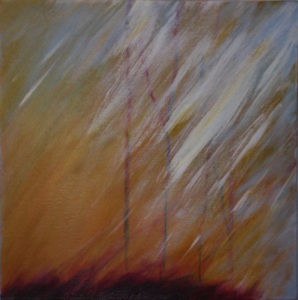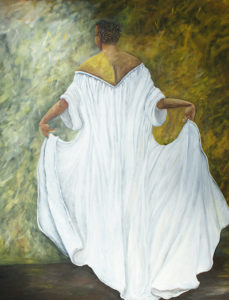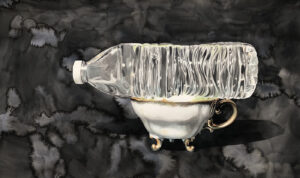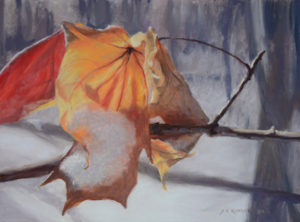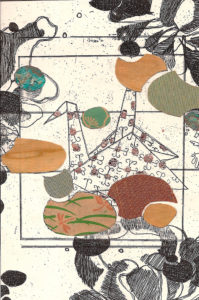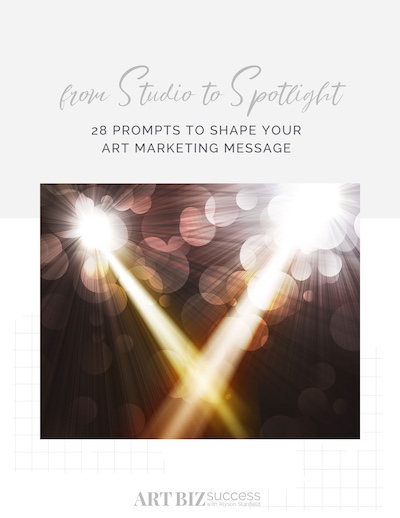
Handwritten Thank-You Notes for Artists
You can set yourself apart from other artists by sending handwritten thank-you notes using real mail.
Every Thanksgiving I try to write something about gratitude. This year I want to remind you of the value of writing a note, addressing an envelope, attaching a stamp, and sticking it in the mail.
My friend Cynthia likes to say that a handwritten note in the mail “blows people away.” It’s true.
Aren’t you delighted when you fish out a personal letter from a pile of junk mail?
And isn’t it always the first thing you open and read?
You do this because you know that someone went to great effort to send real mail.
And it looks infinitely more interesting than

5 Week Push for Your Art Goals
Caught you!
You were looking at your calendar. You’re counting the days until a fresh start. Thanksgiving … Christmas … New Year’s Eve … and, at last, January 1. Or, rather, January 2 because no one works on the first day of the year.
Maybe you’re lamenting the fact that it’s the end of the year and there is much left undone. (Incidentally, the core message in this post applies regardless of the time of year.)
You had big plans last January, right? That’s when you were wearing rose-colored glasses with glitter on them and sipping the New Year’s Kool-Aid.
Now you’d rather think about next year and give up on this one. You are so ready for a fresh start. After all, the holidays are upon us and, if we’re being honest, very little gets done during the holidays what with all the baking, decorating, wrapping, card-writing, shipping, egg-nogging, and Hallmark-movie-watching (no judgment).
Stop This Nonsense
If this is you, stop it. This is unproductive, and it’s no way to run a profitable art business. You can’t make progress or maintain momentum if you’re effectively writing off more than 5 weeks at a stretch.
Five weeks is plenty of time to make an impact. It’s plenty of time to get sh*t done. It’s plenty of time to cross a few things off your list.
Every day is precious.
Every day presents an opportunity that you can either grab with gusto or thumb your nose at.
High achievers don’t write off weeks at a time because they prefer the excitement of a New Year to the hard work of the current one.
Reevaluate Your Priorities
If you find yourself looking forward to the New Year rather than putting your whole heart into finishing this one in style, you have some difficult questions to answer.

Productivity for Artists Isn’t About Doing More
Productivity for artists doesn’t mean that you work harder or take on more than you can handle. It means that you work smarter—that you use your time wisely.
If you want to be a more productive artist, you must embrace your role as the CEO of your art business. In that capacity, you understand that every decision you make impacts your income, influence, and legacy. Every decision.
When you are productive … when you are fully in charge of your art business … you know which tasks are most important and which can wait.
A Productive Artist’s Profile
Before I get too deep into this topic, I have to fess up to having more than my fair share of unproductive days. My productivity seems to come in cycles. Maybe it’s the change of seasons or the promise of the New Year, but, lately, my productivity has soared.
I am still trying to figure out the productivity puzzle. I read plenty about the topic. I listen to productivity podcasts. I, like you, want the secret sauce that will help me eke out one or two more tasks in a day. (I’ve also discovered that one can, ironically, be incredibly unproductive while researching productivity.)
I’m in the process of holding individual video conferences with every single member of my coaching programs to reflect on their year with us. After asking about their accomplishments, I want to know about the challenges they continue to face.
Those who have been working with us longer have higher level and focused challenges. Those who are newer consistently list time (lack thereof) and prioritizing as their biggest challenges.
You are not alone in your drive to become a more productive artist. But the good news is, it’s a skill you can learn.
How You Spend Your Time is a Reflection of Your Priorities
Becoming more productive is a process you need to put in place and, here’s the clincher, follow for months and years. You must be committed to the process, and you won’t be unless you’re also committed to your art business and career.
You get to choose how to spend your time, and how you spend your time reveals what you prioritize in life.
How you spend your time tells the rest of the world what is important to you.
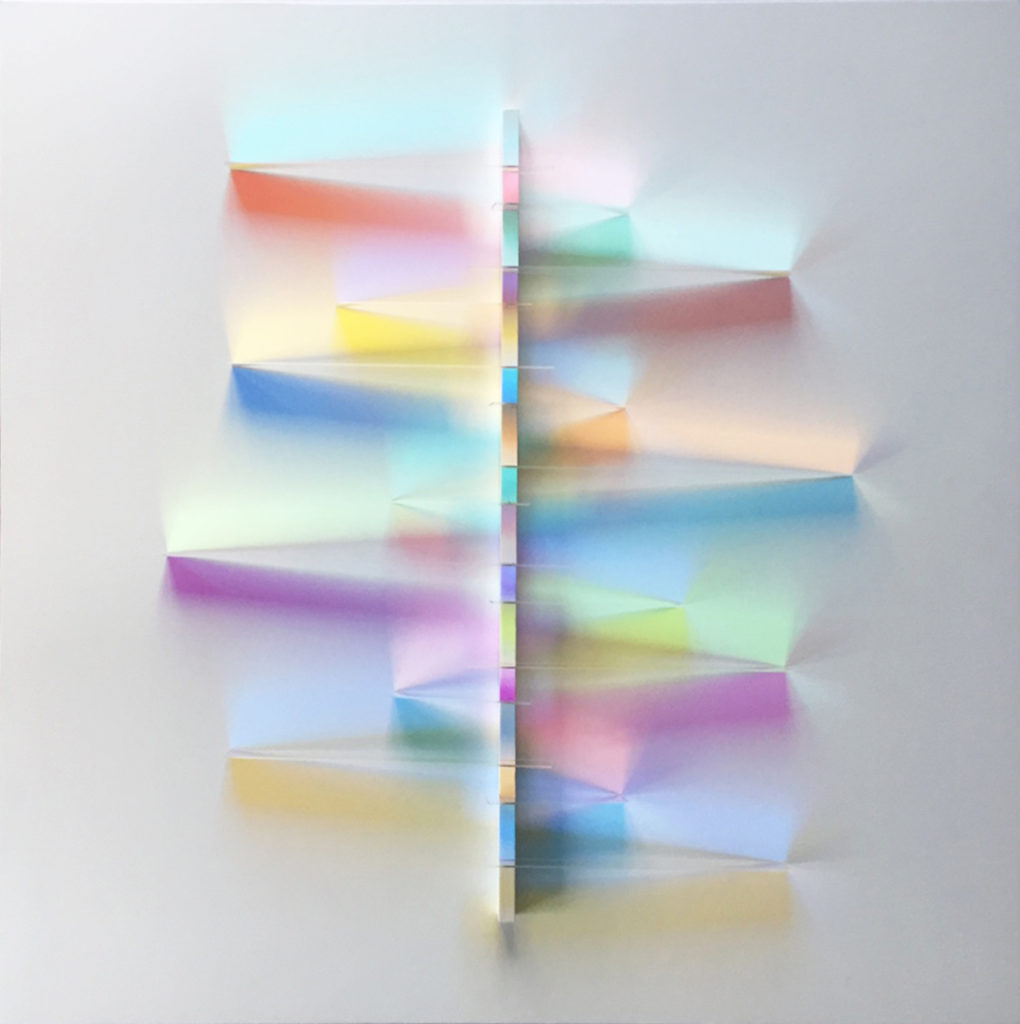
Juggling Multiple Income Streams as an Artist
Relying on sales of original works of art doesn’t always pay the bills. Sales can be seasonal, galleries can shut their doors, or the economy might tank. No doubt you are already aware.
This is why I am all for artists having multiple streams of income–when it makes sense.
Multiple Streams of Income for Artists
An income stream is a source of money.
Your income streams might include employment outside of your art business, but I want to focus on diversifying how you make money from your art.
Selling original works of art is probably the most appealing way for you to make money from your art. Other avenues include, but aren’t limited to, teaching, licensing, writing, and selling reproductions.
Sometimes multiple income streams go together under a broad heading.
For example, if teaching is one of your incomes streams, you might break down that money into income from online classes and in-person classes. Additional funds might come from how-to books and informational products.
They’re all related to instructing and marketed to the same audience.
Likewise, you might make products with your art and have separate smaller streams from note cards, note pads, and calendars.
When It’s Silly to Have Multiple Income Streams
Diversifying income sources from your art is tempting. You might think, More stuff=More money! Watch it.
As I described above, some sources make sense together because they are marketed to the same audience. Other times, they’re completely separate businesses.
One example is licensing. There is an entirely separate audience for licensed art than for original fine art. The people and venues you work with are different.
This means you essentially have separate businesses. Two businesses means you exert twice the effort. Three businesses will cost you 3 times the effort.
The result: multiple business plans, marketing plans, venues, and audiences. Each income stream must be attended to.
It’s silly to go to the trouble of creating a new source of income that you don’t have time or energy to invest in.
It’s also a terrible business practice to sell more “stuff” if you don’t know what you’re getting into. Many artists are spending too much time on things that have too little return.
Simple Math
You have to do the math. Is it making money?
Your Artist Email Signature Block
Your artist signature block is the text you add to the end of your individual emails, and it’s a free marketing tool.
What to Include in Your Signature Block
Your signature block might contain a mixture of any, but not all!, of the following.
- Your full name (required)
I have a policy against answering emails that are unsigned, and I’m sure I’m not alone. If you don’t care to tell me who you are, why in the world should I respond? - A link to a compelling page on your website.
- Your location (You’re sending email all over the world. Tell people where you’re from!)
- Your phone number
- Your website address
- Select social media links
- A tagline about your art
- An upcoming event, such as a workshop or exhibition, you’re promoting
How Much to Include
Err on the side of brevity. The fewer words, and the fewer links the better in your signature block.
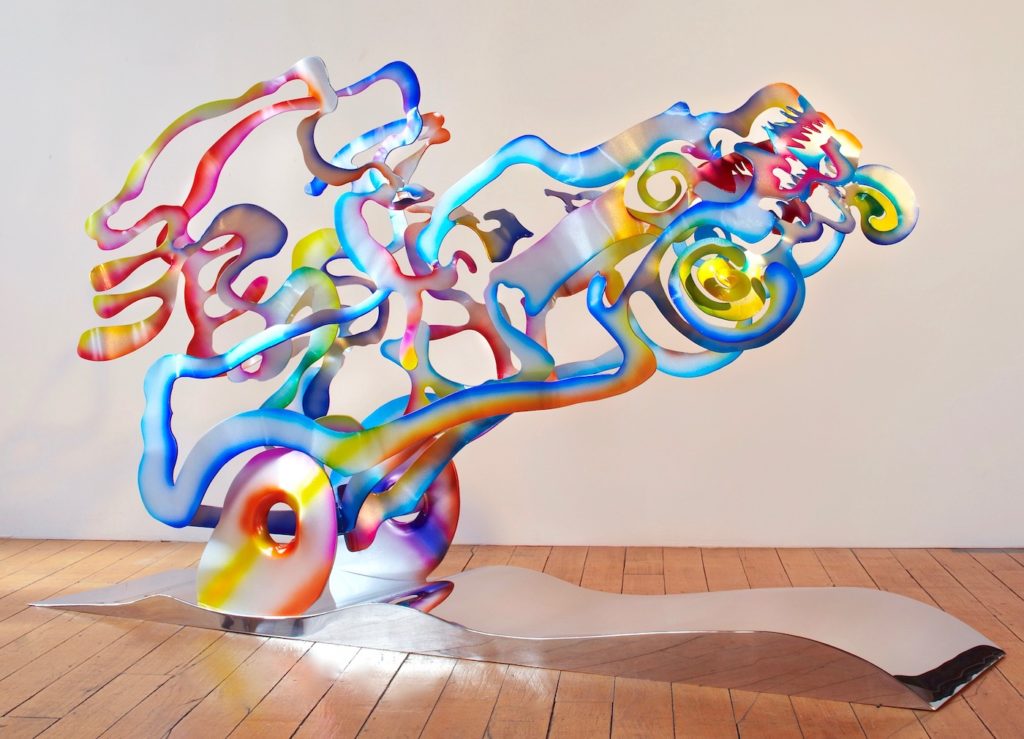
Following Up After You’ve Sold a Piece of Art
People who buy from you once are more likely to buy from you again than people who have never bought from you.
And … It’s less effort to nurture relationships with people who already know, like, and trust you than to find new people to share your art with. Acquiring customers, in marketing terms, is a long and costly process.
Therefore, it makes sense to take care of the people who have purchased from you. Show them you appreciate them now instead of contacting them later only when you want something from them.
One of the biggest mistakes artist-entrepreneurs make is not following up with people who have given them money.
If you’ve been lax in this area, you might be leaving money on the table.
If you sell art from your studio, rather than through a gallery, you have no excuses for not following up appropriately. You have the name and contact information of your collectors.
Here’s a plan to awe your collectors–not just once, but over the course of your relationship.
Within 1 Week of Sale: Express Gratitude
Send a thank-you note in the mail. Use notecards with images of your art on them for all of your handwritten notes.
This is yet another opportunity to put your art in front of people who appreciate it. The cards, of course, have your contact info or website on the back.
Don’t exploit this as an opportunity to ask for anything else. Thank-you notes are for expressing gratitude only, not for additional sales or requests.
Two Weeks Later: Ask to Connect
In this email, suggest to your collector that

